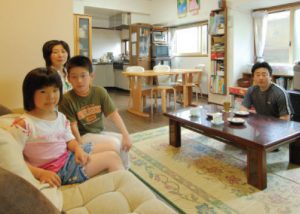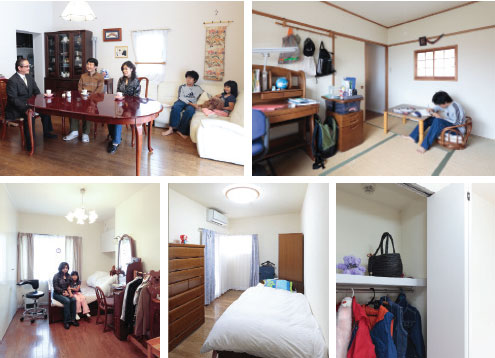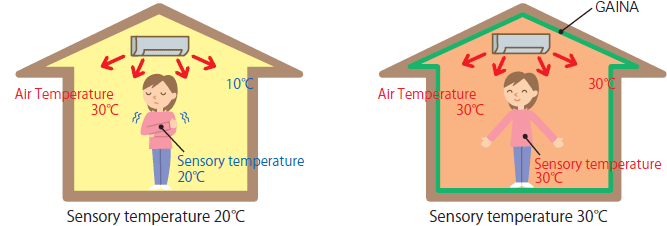Remains a comfortable 10ºC+ (75ºF+) at night…even after heat is turned off!

*Painted area: walls/ceilings – about 175m² (1,884 sq. ft.), exterior: about 173m² (1,862 sq. ft.)
Living in Nagano Prefecture, a region known as “snow country,” this family explains,
“We can say from experience that GAINA truly insulates during the winter months.”
In the past, they used a powerful electric heating system with an oil heater during the day. They kept the oil heater going while they slept at night, but the room temperature still dropped below 0°C (32 °F) by morning.
“After we painted this spacious room with GAINA, we only needed one heater. We turn the heater off at bedtime, yet the room temperature is never below 10°C+ the next morning.”
GAINA significantly reduced the family’s electric and gas bills.
A warmer floor and less condensation!

*Painted area: walls/ceilings, closets – about 115.1m² (1,239 sq. ft.)
After moving into their new condominium in suburban Tokyo, this family found the winters extremely cold. The condo’s concrete foundation kept the rooms perpetually chilly, and even with insulation, the floors in the rooms facing north felt like ice. Condensation was also a constant issue. Their initial thought was,
“We have to break down the walls and add more insulation in order to capture the heat”
but upon hearing that GAINA could make a difference, they decided to coat the walls, ceilings, and inside the closets. The result was immediate. The rooms were warmer even in the winter, and condensation disappeared.
“Before, we spent most of our time in the south-facing living room, but now the entire mansion is comfortable and we can enjoy using rooms on the north side as well”
says the family.
Calorific Value Experiment: GAINA boasts small calorific values
Temperature Adaptation Experiment: GAINA adapts to surrounding temperatures

- Two iron plates are placed side by side. The right plate is painted with GAINA, the left with regular paint. Both are exposed to hot air blasts from front-center.
- The temperature of the GAINA-coated plate starts to rise as indicated by thermography (screen changes from red to white).
- The temperature of the GAINA-coated plate continues to rise, while the plate coated with regular paint just starts to heat up.
- After the air blast is switched from hot to cold, the temperature of the GAINA-coated plate drops significantly, showing GAINA’s ability to adapt to surrounding temperatures.
Exterior coating prevents heat from escaping

Heat moves from higher to lower areas. With GAINA painted on exterior walls, the surface adapts to the surrounding temperature, achieving heat equilibrium and minimum heat movement. This phenomenon enables GAINA to keep the cold outside and the heat inside.
Interior coating improves heat retention

Even when the internal temperature is high, heat can escape if walls and ceilings are cooler. With GAINA coating the interior, the temperature of the air and wall surfaces balance out, minimizing heat movement.
GAINA helps improve your sensory temperature

On the left, the air temperature is 30°C (86°F), the walls and ceiling temperature 10°C (50°F), and the sensory temperature 20°C (68°F). In the GAINA-coated room on the right, even when the air temperature is the same 30°C, the walls and ceiling adapt and also maintain 30°C, and the sensory temperature also attains 30°C, a 10-degree increase.
